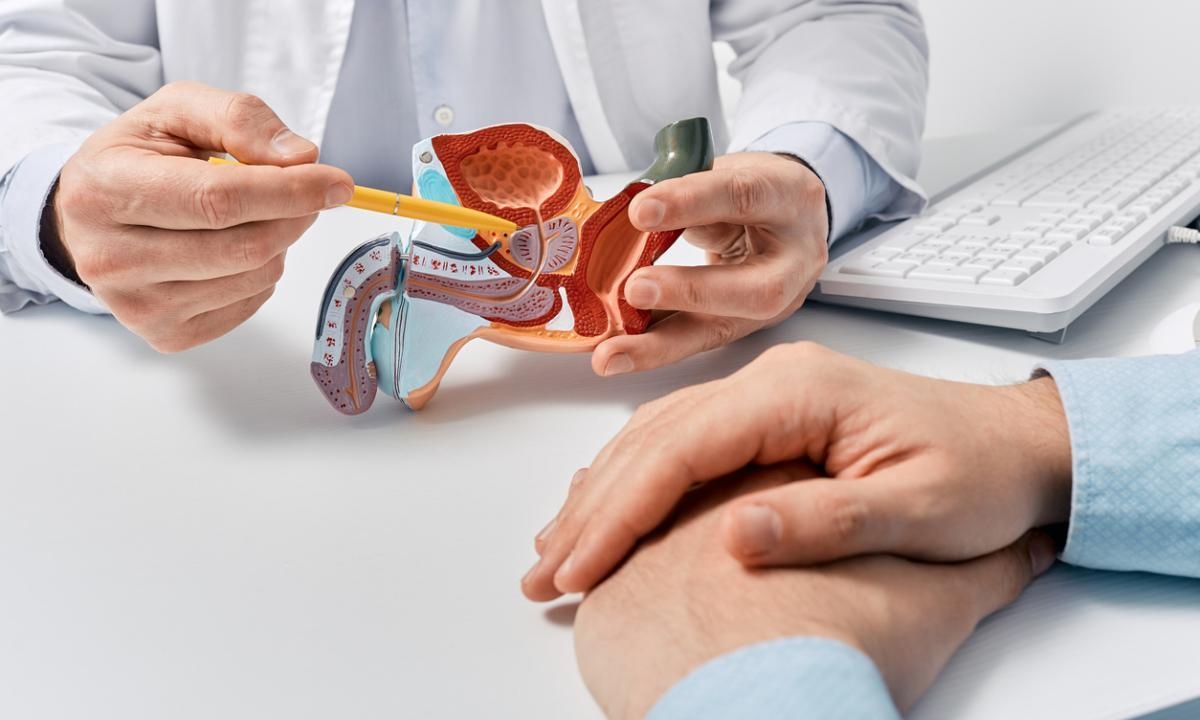
Virtual Reality in Personalized Medicine: The Future of Tailored Healthcare
Virtual Reality (VR) is rapidly transforming various sectors, with healthcare being one of the most significant beneficiaries.
Among the numerous applications of VR in medicine, its role in personalized medicine is particularly groundbreaking. Personalized medicine aims to tailor medical treatment to the individual characteristics of each patient, and VR is proving to be a powerful tool in achieving this goal.
The Intersection of Virtual Reality and Personalized Medicine
What is Personalized Medicine
Personalized medicine, often referred to as precision medicine, involves customizing healthcare based on a patient's genetic makeup, lifestyle, and environment. Traditional medicine typically takes a one-size-fits-all approach, where treatments are developed for the average patient. However, personalized medicine seeks to optimize the effectiveness of treatment by considering the unique differences in each individual.
The Role of Virtual Reality
Virtual Reality has emerged as a crucial technology in enhancing personalized medicine. By creating immersive and interactive environments, VR allows healthcare professionals to better understand, diagnose, and treat individual patients. Whether it’s simulating a patient’s unique anatomy or providing a personalized rehabilitation program, VR offers endless possibilities.
Applications of Virtual Reality in Personalized Medicine
1. Customized Surgical Planning and Training
One of the most promising applications of VR in personalized medicine is in surgical planning and training. Surgeons can use VR to visualize a patient’s anatomy in three dimensions before performing surgery. This visualization can be customized to reflect the exact conditions of the patient, such as the size and shape of a tumor or the position of blood vessels. This personalized approach helps in reducing risks and improving surgical outcomes.
Additionally, VR provides an excellent platform for training surgeons. Trainees can practice complex procedures in a risk-free virtual environment that mimics the specific conditions of real patients. This not only improves the skills of surgeons but also enhances their confidence, ultimately leading to better patient care.
2. Personalized Rehabilitation Programs
Rehabilitation is another area where VR is making significant strides in personalized medicine. Traditional rehabilitation programs often fail to address the specific needs of individual patients. However, with VR, healthcare providers can design rehabilitation exercises that are tailored to the patient’s condition, progress, and preferences.
For example, a stroke patient can undergo a VR-based rehabilitation program that adapts to their specific motor impairments, providing exercises that gradually increase in difficulty as the patient progresses. This level of personalization not only accelerates recovery but also makes the rehabilitation process more engaging for patients.
Case Study: Stroke Rehabilitation
A recent study highlighted the effectiveness of VR in stroke rehabilitation. Patients who participated in a VR-based rehabilitation program showed significant improvements in motor function compared to those who underwent traditional therapy. The ability of VR to simulate real-life scenarios and provide instant feedback was cited as a key factor in the success of the treatment.
3. Virtual Patient Avatars for Treatment Planning
Another innovative application of VR in personalized medicine is the creation of virtual patient avatars, often referred to as "virtual twins." These avatars are digital replicas of patients that are created using their medical data, including imaging scans, genetic information, and physiological data. Doctors can use these avatars to simulate how different treatments might affect the patient, allowing them to select the most effective and least invasive options.
For instance, a virtual twin can be used to model how a particular drug will interact with a patient’s unique genetic makeup. This allows for a more precise dosage and reduces the risk of adverse reactions, thereby optimizing the treatment plan.
“Virtual twins are revolutionizing the way we approach treatment planning. By creating a digital replica of the patient, we can predict the outcomes of various treatments with unprecedented accuracy. This level of personalization is the future of medicine.” Dr. Emily Watson, Personalized Medicine Expert
4. Improving Patient Education and Engagement
Patient education is a critical component of personalized medicine, and VR is proving to be an effective tool in this area. Complex medical conditions and treatments can be difficult for patients to understand. VR can simplify this by providing immersive educational experiences that explain these concepts in an engaging and easy-to-understand manner.
For example, a patient diagnosed with cancer can use VR to explore a 3D model of their tumor, understand how it is affecting their body, and see how different treatment options might work. This not only improves patient understanding but also helps in making informed decisions about their treatment.
Moreover, VR can increase patient engagement by making the treatment process more interactive. Patients are more likely to adhere to treatment plans when they fully understand their condition and are actively involved in the decision-making process. This is particularly important in chronic conditions where long-term management is necessary.
5. Data Collection and Analysis
VR environments can be equipped with sensors that collect real-time data on a patient’s physiological responses, such as heart rate, blood pressure, and brain activity. This data can be used to monitor the patient’s progress and make adjustments to their treatment plan as needed. Personalized medicine relies heavily on data, and VR provides a rich source of information that can be analyzed to optimize patient care.
Table: Benefits of VR in Personalized Medicine
| Application | Benefits |
| Customized Surgical Planning | Improved precision, reduced risks |
| Personalized Rehabilitation | Tailored exercises, accelerated recovery |
| Virtual Patient Avatars | Accurate treatment planning, reduced risks |
| Patient Education and Engagement | Better understanding, increased adherence |
| Data Collection and Analysis | Real-time monitoring, data-driven decisions |
Challenges and Future Directions of Virtual Reality in Personalized Medicine
1. Technological Limitations
Despite the promising applications of VR in personalized medicine, there are several challenges that need to be addressed. One of the primary limitations is the current state of VR technology. While VR has made significant advancements, it still requires further development to fully realize its potential in healthcare. Issues such as high costs, the need for specialized equipment, and the lack of standardized protocols are barriers to widespread adoption.
2. Privacy and Ethical Concerns
Another significant challenge is the ethical implications of using VR in personalized medicine. The collection and analysis of large amounts of personal data raise concerns about privacy and data security. Ensuring that patient data is protected and used responsibly is crucial in maintaining trust and advancing the field.
3. Integration with Existing Healthcare Systems
Integrating VR into existing healthcare systems is another hurdle that must be overcome. Healthcare providers need to be trained in using VR technologies, and the systems must be compatible with current medical practices and infrastructure. Collaboration between technology developers, healthcare providers, and regulatory bodies is essential to address these challenges.
What's Next for Virtual Reality in Personalized Medicine?
Virtual Reality is poised to play a transformative role in personalized medicine, offering tailored solutions that cater to the unique needs of each patient. From customized surgical planning and personalized rehabilitation programs to virtual patient avatars and enhanced patient education, the applications of VR are vast and varied. However, challenges such as technological limitations, privacy concerns, and integration issues need to be addressed to fully harness the potential of VR in healthcare.
The future of medicine is not just about treating diseases but understanding and addressing the individual needs of each patient—and VR is at the forefront of this revolution.
As technology continues to advance, the future of Virtual Reality in personalized medicine holds immense promise for revolutionizing patient care and treatment approaches. Here are some key developments to watch for:
- Enhanced Surgical Precision: VR will allow for even more accurate pre-surgical planning and simulations, reducing the risks associated with complex procedures.
- Advanced Rehabilitation Programs: Personalized VR-based rehabilitation will continue to evolve, providing more tailored and effective recovery plans for various conditions.
- Development of Sophisticated Virtual Twins: Future VR technologies will create highly detailed virtual patient avatars, allowing for precise simulation of treatment outcomes and drug interactions.
- Improved Patient Education: VR will become an integral tool in patient education, offering immersive experiences that simplify complex medical information and enhance understanding.
- Integration with AI and Machine Learning: Combining VR with artificial intelligence will enable more dynamic and responsive healthcare solutions, adjusting treatment plans in real time based on patient data.
- Expansion of Telemedicine: VR will enhance telemedicine by providing virtual consultations and remote diagnostic capabilities, improving access to personalized care.
- Better Data Collection: VR environments will collect more comprehensive real-time data on patient responses, aiding in the development of more effective and personalized treatment plans.
- Increased Accessibility: As VR technology becomes more affordable and widespread, its application in personalized medicine will expand, making advanced healthcare solutions accessible to a larger population.
- Ethical and Privacy Improvements: Future developments will focus on addressing ethical concerns and improving data security to protect patient privacy in VR applications.
The evolution of VR promises to make healthcare more precise, effective, and accessible, paving the way for a new era of patient-centered care
Trending
-
1 Mental Health Absences Cost NHS £2 Billion Yearly
Riddhi Doshi -
2 Gut Check: A Short Guide to Digestive Health
Daniel Hall -
3 London's EuroEyes Clinic Recognised as Leader in Cataract Correction
Mihir Gadhvi -
4 4 Innovations in Lab Sample Management Enhancing Research Precision
Emily Newton -
5 The Science Behind Addiction and How Rehabs Can Help
Daniel Hall





Comments